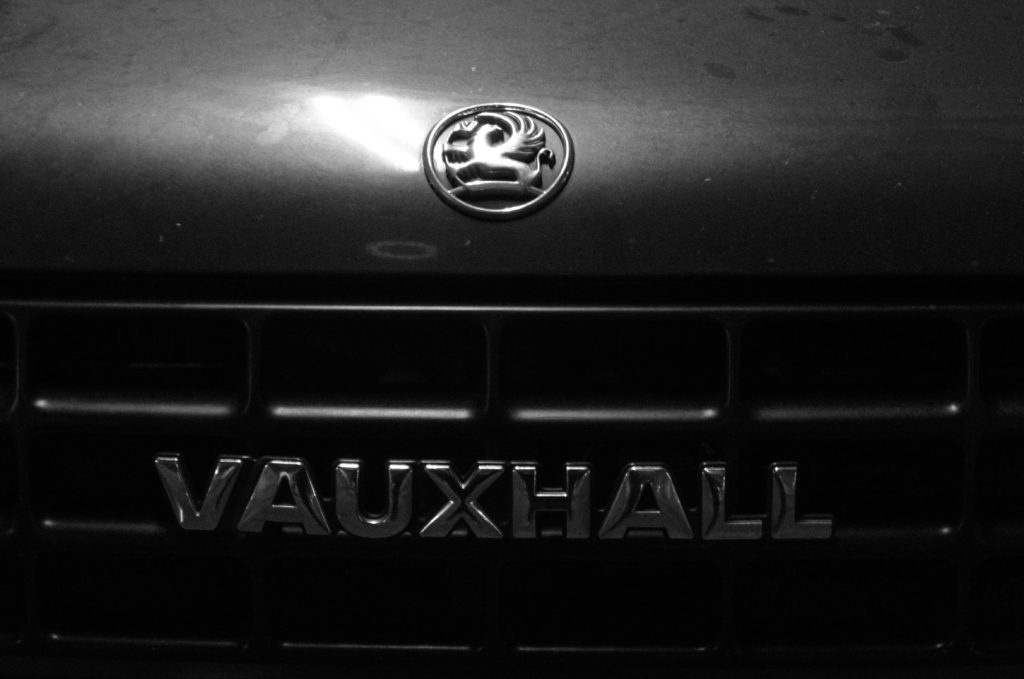Location: Abandoned Places
To explore natural landscapes more i decided that i wanted to go to abandoned places that have been neglected to create more interesting subjects for my images. I decided that I would visit derelict greenhouses with overgrown plants showing the natural aspect with the broken greenhouse creating a more thought-provoking image. Although these photos aren’t completely natural, they show how the natural aspects have taken over and grow around the urban spaces.
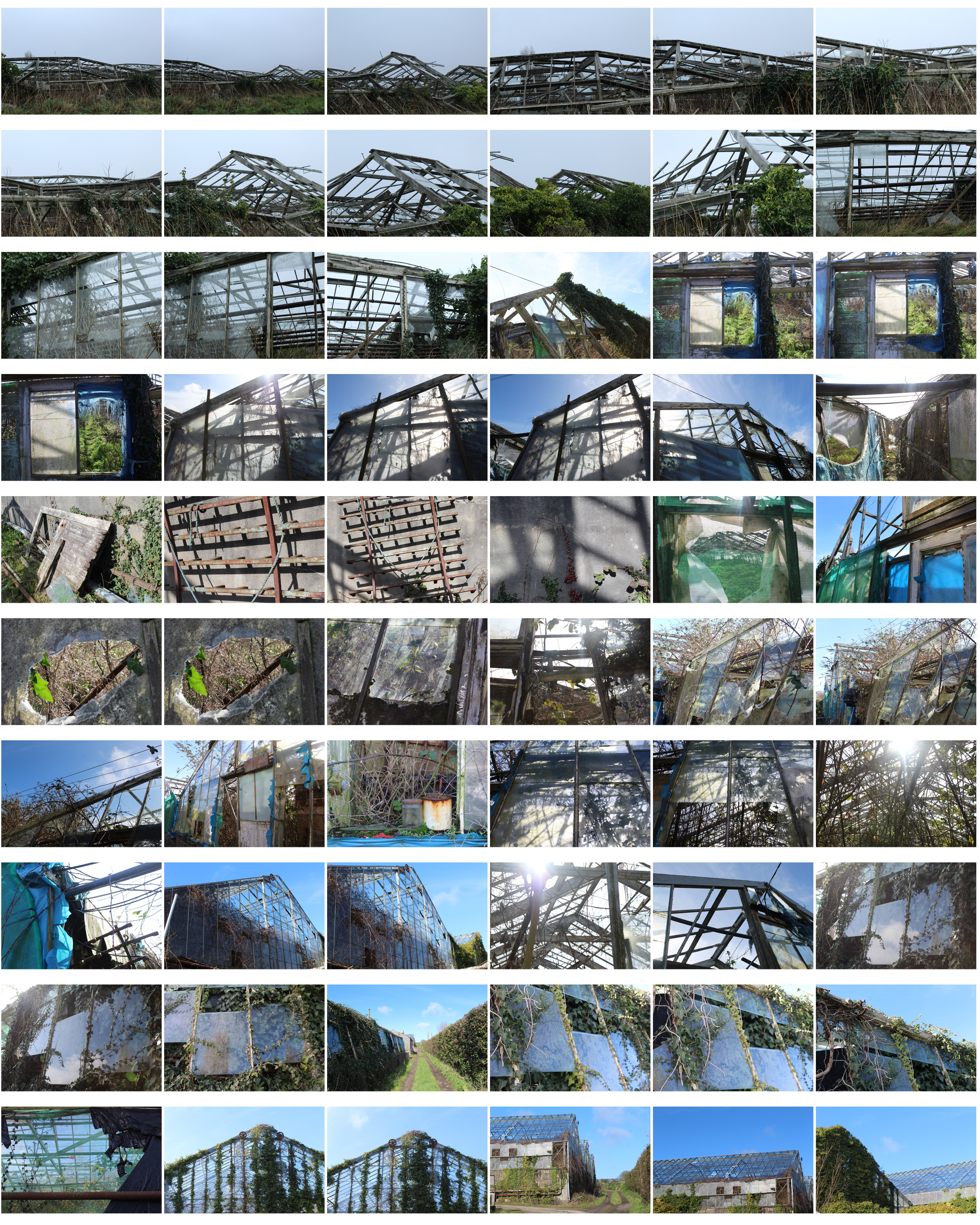


I went through my contact sheet and selected my favourite images and displayed them above unedited. I chose these photos as they are taken from different angles showing a different point of view in each image, some showing close up detail of areas that caught my attention and some that are from far away giving more of an overview of the scenery and structural shapes.

- This is one of my final images for this homework as it clearly show the natural aspects i wanted to present and the derelict urban aspect through the broken glass.
- I focused in on the left side of the image so the right side was gradually more out of focus to show the marks and patterns on the glass more clearly.
- The glass has a reflection from the blue sky so I edited it slightly so that colour was emphasised to take make the image stand out more. The glass also has marks to show the derelict aspect of the greenhouses.
- The colour of the plants growing around the glass are also emphasised showing darker and lighter greens. I chose this image as the panes of glass that are there create a pattern as some are missing.





- I also like this image and decided for it too be printed and framed along with the image below as I think it portrays derelict greenhouses well.
- The wooden frames with missing glass panes give evidence of destruction and reflects what happens to structural buildings over time.
- I like the geometrical pattern that is created and the angle of the wooden door and frames also show how the greenhouses have been left alone for a long period of time to eventually be destroyed.
- The condition of the plastic sheets show weathering and also show how the area has been neglected.
To experiment with my images I decided to edit different shapes with the image to make the photo more intriguing and to give the photo a different aspect, although I like the images by themselves.


- I like the geometrical shapes and lines created from the broken wooden frames, giving a different effect than if they were not derelict.
- The shapes I have edited emphasise the geometrical lines and shapes within the image and adds a different aspect to the photo.
- The most effective image i think is the square as its simple and not distracting too much from the original image and the detail within it as the other shapes remove whole areas from the background image, whereas the square is a thin line.
- The shape also brings the light blue from the sky into the bottom half of the image creating contrast between the two as it contains parts of the image within the square.
- The colours within the image as a whole are very neutral: the panes of broken glass on the left side of the photo also show the reflection from the sky making them appear blue in the image and show the reflection of the clouds aswell.
- This blue then contrasts with the green on the right side on the image on a different greenhouse,


I also tried to create some panoramic images by taking the same image and flipping it horizontally and attaching to the original image. I did this as i thought it would be harder to attach different images and line them up exactly to create one landscape so i use the same images flipped so the it was easy to connect which I thought would be more aesthetically pleasing. These panoramic images create structural shapes that would not be found in real life making for an interesting image. I did not chose these images to be in my final outcomes as I think the patterns created are too repetitive being the same images repeated again.







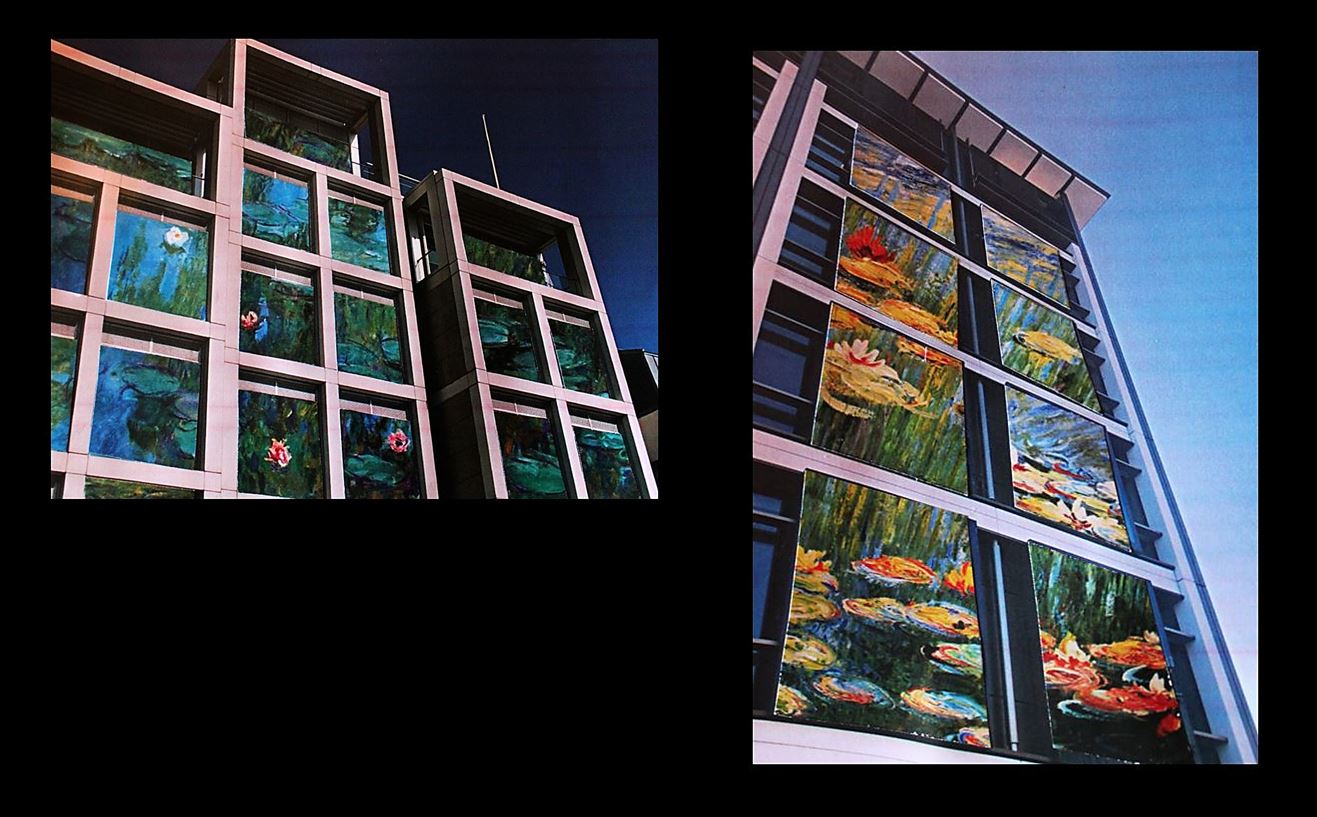









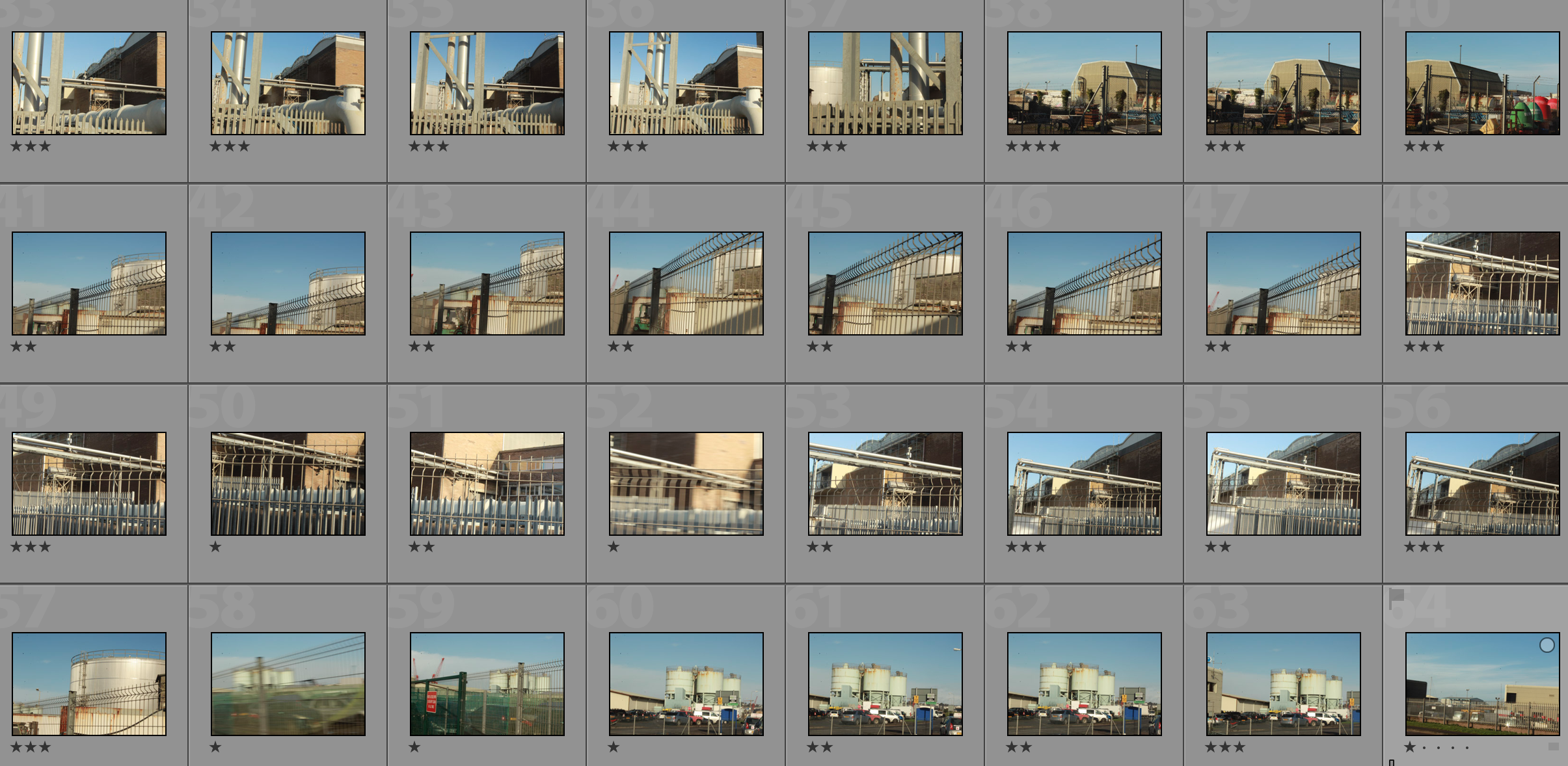










 I found that Svalbonas used a calm colored backdrop to her creations to balance the entire piece and really make the design pop out. In response to this I looked through previous photo-shoots picking out images of buildings that I had taken recently. Once found I proceeded onto Photoshop to cut out and stick the parts of these buildings together creating a structure similar to that of Svalbonas, to which I would continue to add a colored matt backdrop that in my opinion balanced the image out. This was my process:
I found that Svalbonas used a calm colored backdrop to her creations to balance the entire piece and really make the design pop out. In response to this I looked through previous photo-shoots picking out images of buildings that I had taken recently. Once found I proceeded onto Photoshop to cut out and stick the parts of these buildings together creating a structure similar to that of Svalbonas, to which I would continue to add a colored matt backdrop that in my opinion balanced the image out. This was my process: From here I cut out the buildings individually and proceeded to join them together experimenting with what fitted well.
From here I cut out the buildings individually and proceeded to join them together experimenting with what fitted well. To do this I used the lasso tool to accurately outline the object wanted so that I could then paste onto the design and move it around until satisfied with its placement.
To do this I used the lasso tool to accurately outline the object wanted so that I could then paste onto the design and move it around until satisfied with its placement. Once the design had been finished I experimented with a series of colors that I thought were neutral and would not overpower the overall piece. To do this I used the shape tool to cover the backdrop with a large square where I could then change the colors of it.
Once the design had been finished I experimented with a series of colors that I thought were neutral and would not overpower the overall piece. To do this I used the shape tool to cover the backdrop with a large square where I could then change the colors of it.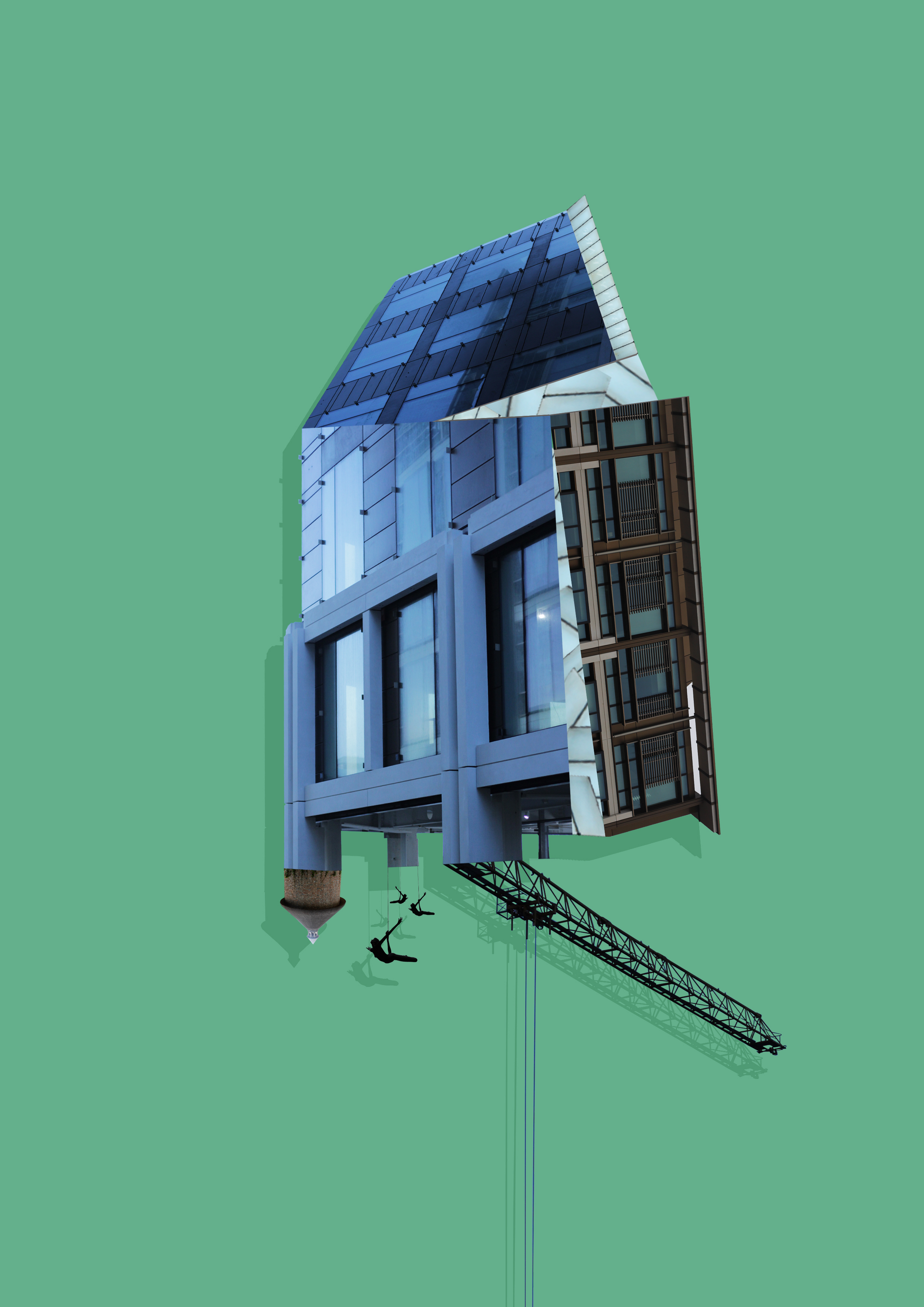
 To create these images I mainly incorporated photos that I had based around the International Finance Center for my psycho-geography shoot and a few images from various other shoots. Whilst doing so I found that by duplicating the image and coloring it black while at the same time reducing the opacity, created a shadow like effect to the piece, this allowed for a 3d like effect that I wanted to put across on the piece and at the same time giving it a more graphic feel. Once done I added a green and a pink backdrop to each piece as I found that these colors drew the gaze to the piece rather than be sore from all the negative space surrounding it.
To create these images I mainly incorporated photos that I had based around the International Finance Center for my psycho-geography shoot and a few images from various other shoots. Whilst doing so I found that by duplicating the image and coloring it black while at the same time reducing the opacity, created a shadow like effect to the piece, this allowed for a 3d like effect that I wanted to put across on the piece and at the same time giving it a more graphic feel. Once done I added a green and a pink backdrop to each piece as I found that these colors drew the gaze to the piece rather than be sore from all the negative space surrounding it.





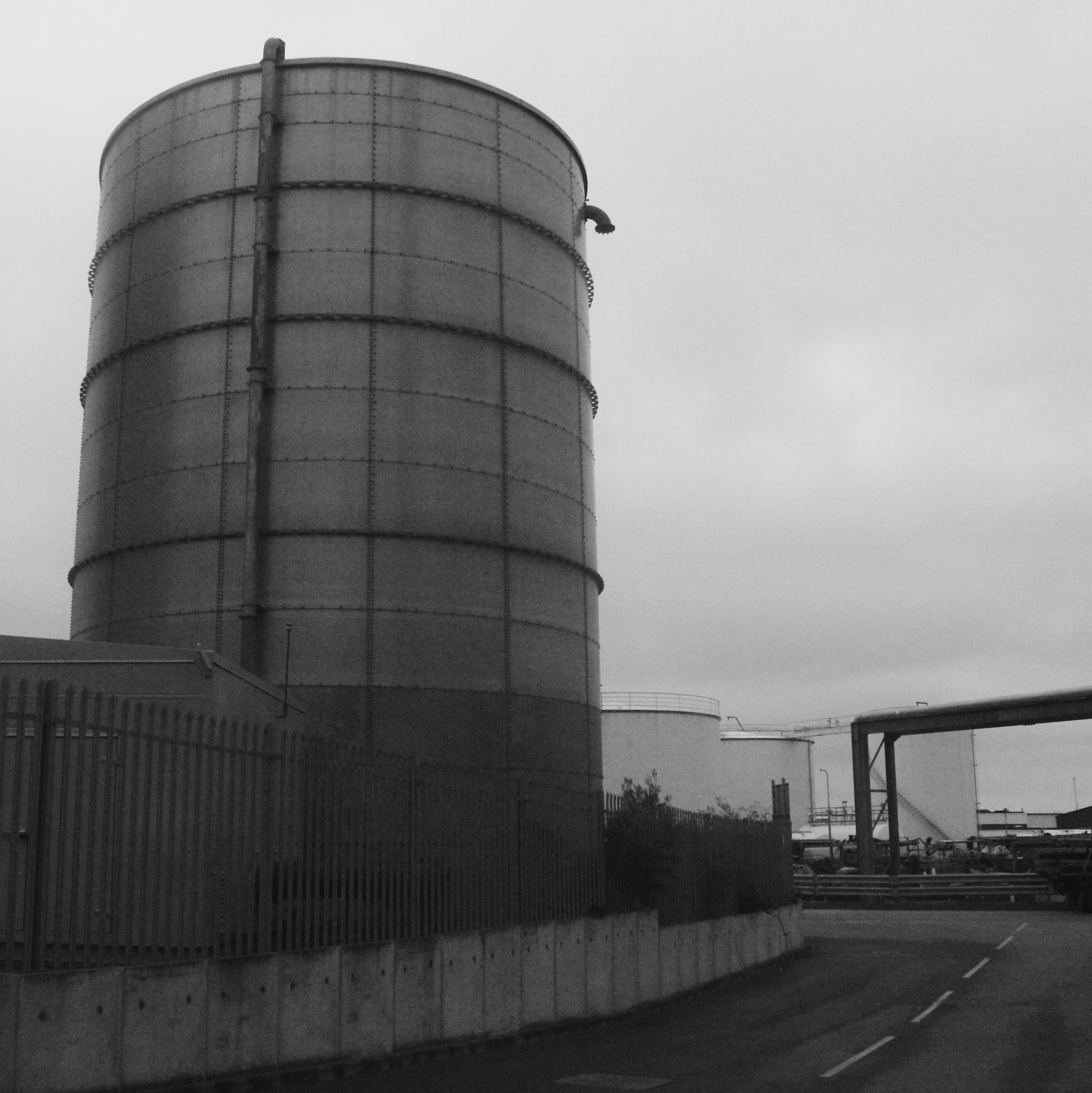

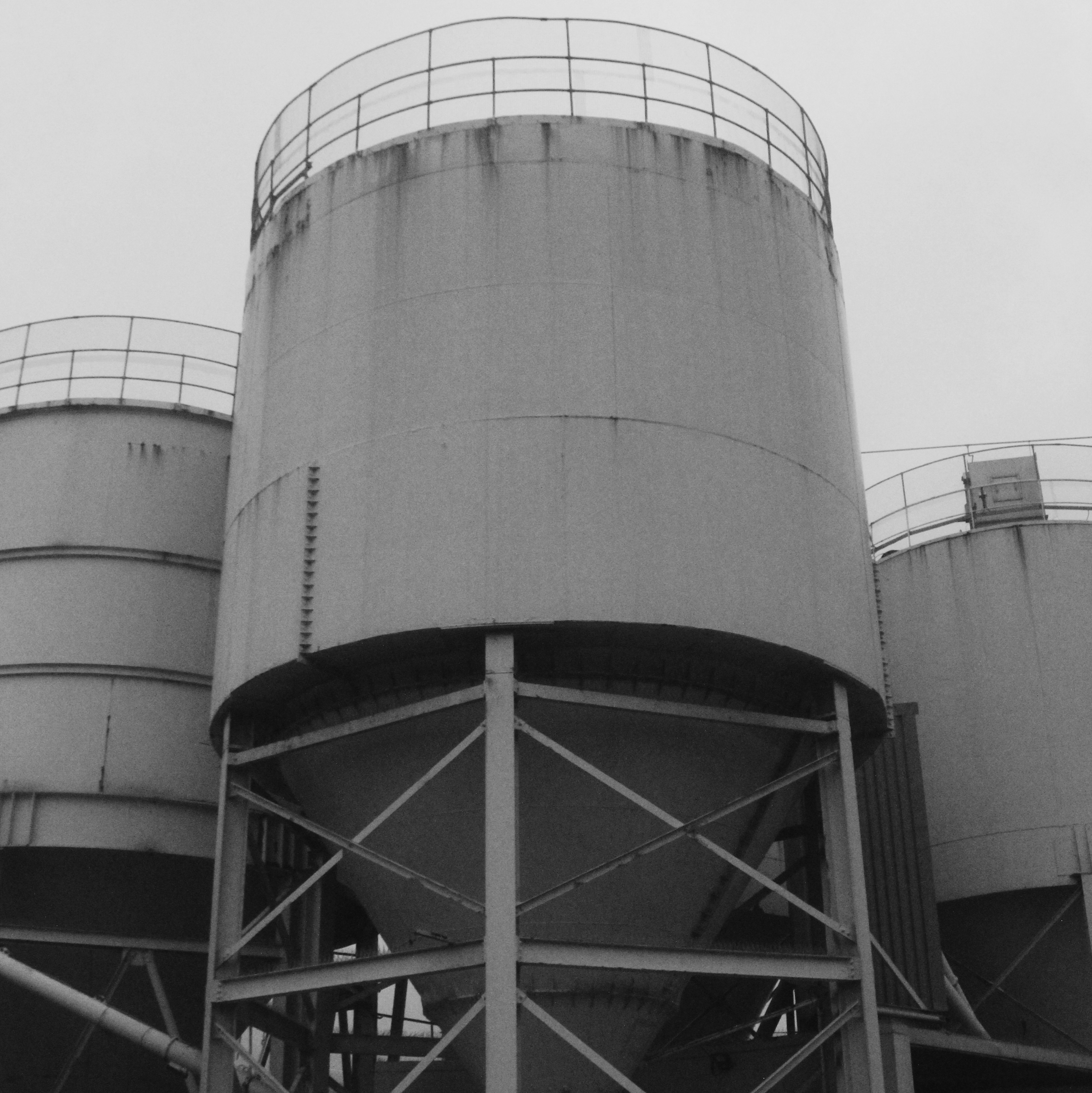























 His images are digitally manipulated photographs of non-existent, fantastical buildings that appear to be real.
His images are digitally manipulated photographs of non-existent, fantastical buildings that appear to be real. At first, he only made images in black and white, but then he realised that the real world is not b&w but coloured. So since then he has been making two version at the same time. He believes the black and white version is more surrealistic than colour one.
At first, he only made images in black and white, but then he realised that the real world is not b&w but coloured. So since then he has been making two version at the same time. He believes the black and white version is more surrealistic than colour one.
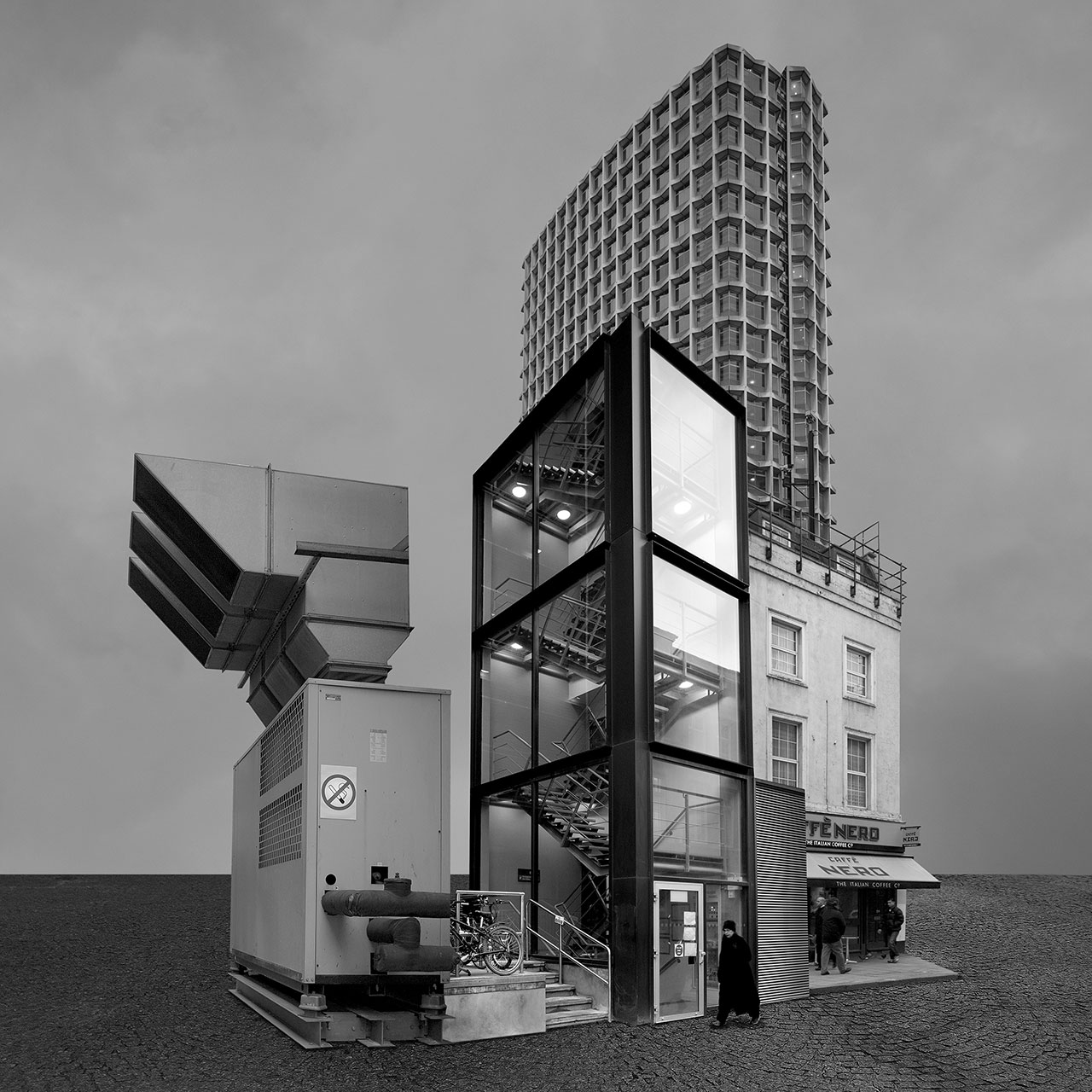


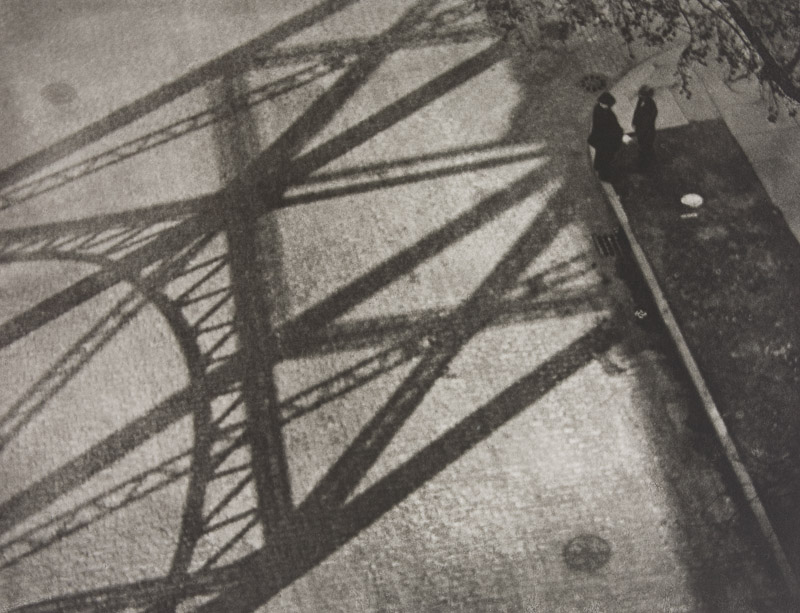



 My Edits
My Edits
